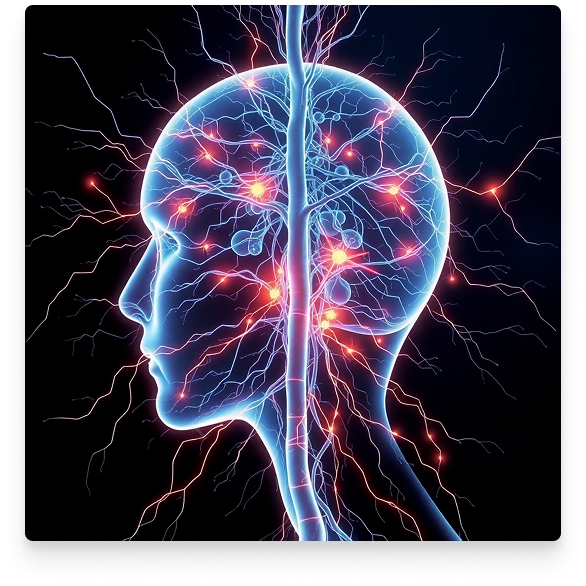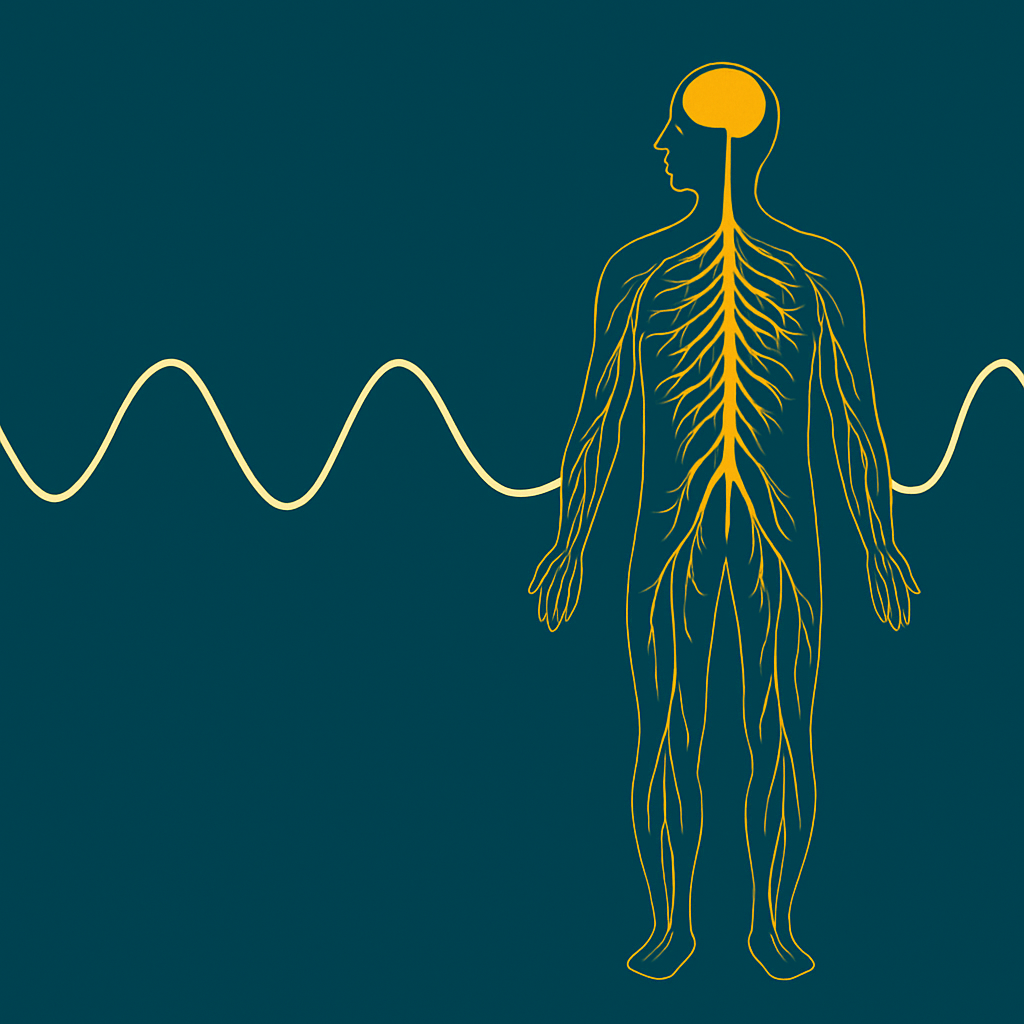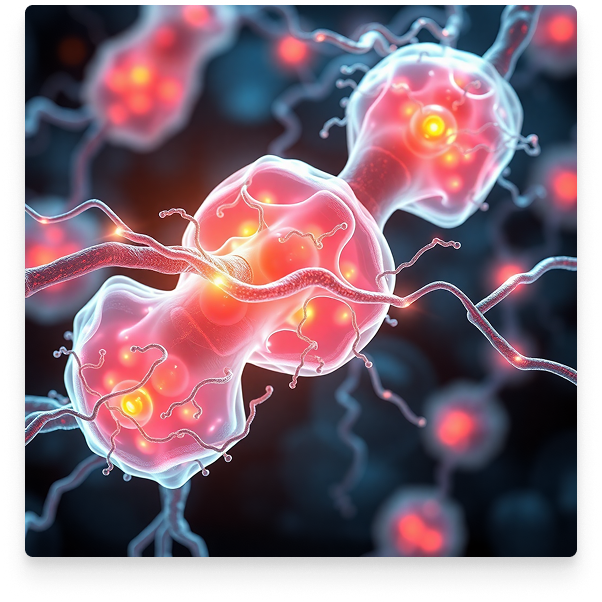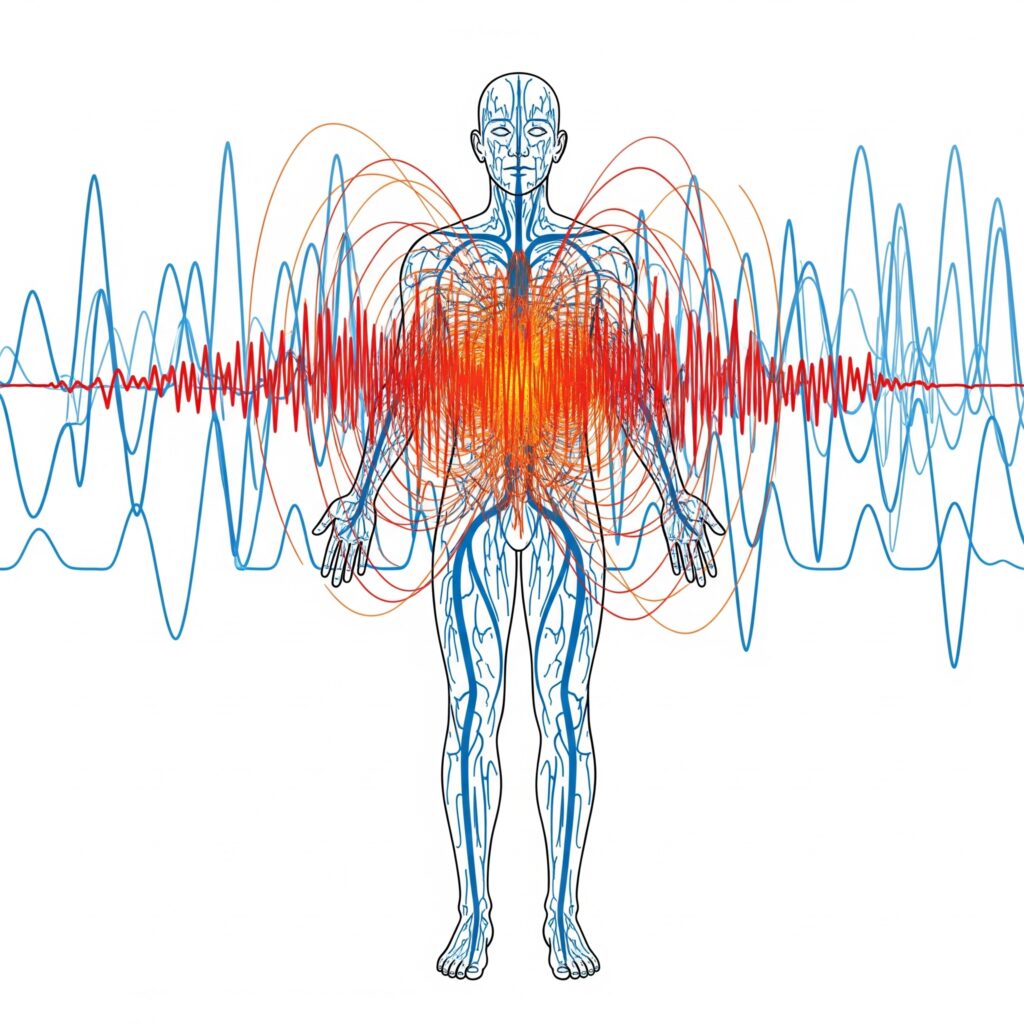The Body Electric
Understanding the Bioelectrical Nature of Human Biology
Shakti Circuit Design and The Body Electric
The concept of the body electric is more than just poetic imagery—it is a scientifically grounded reality. Our bodies operate as highly sophisticated bioelectrical systems, with every function relying on the movement of charged particles and electrical fields.
Read More
From the firing of neurons to the beating of the heart and the very production of ATP within our mitochondria, electrical activity is fundamental to life itself.
However, just as EMF interference can distort AC signals in an audio system, external electromagnetic fields can introduce noise and incoherence into biological communication. Shakti circuit design, going back 30 years was originally utilized to reduce EMI (Electromagnetic Interference) in audio and video components.
Now as a result of unsolicited testimonials from EHS sufferers (Electromagnetic Hypersensitivity) testing, we have begun to offer this technology to the health and wellness marketplace. This paper explains the parallels with the human body and AC circuits.


The Body as a Living Circuit
The movement of energy and information through an AC (alternating current) cable is a close analogy to the way signals are transmitted in the human body. In an AC system, voltage oscillates in a waveform, creating an alternating flow of electrons through a conductor.
Similarly, the human body uses oscillating electrical signals for neural transmission, muscle contractions, and even mitochondrial energy production.

Mitochondria: The Power Plants of the Body Electric
At the cellular level, mitochondria generate ATP, the universal energy currency of life, through oxidative phosphorylation.
This process depends on the electron transport chain (ETC), where electrons move through a series of protein complexes driving protons across the mitochondrial membrane to create an electrochemical gradient.
Read More
Without this bioelectric gradient, energy production ceases, and the cell dies. Mitochondria are also dynamic sensors of electromagnetic fields (EMFs).
Since they function based on ion gradients and charge separation, they are inherently sensitive to external electromagnetic influences. Some studies suggest that non-ionizing radiation, such as radio-frequency EMFs (from Wi-Fi, cell phones, and power lines), could disrupt mitochondrial function, potentially leading to oxidative stress, DNA damage, and metabolic dysregulation.
While the extent of this disruption is still debated, the fact that mitochondria operate through finely tuned electrical mechanisms makes them plausible targets for external electromagnetic interference.
Key Functions:
ATP Production
Electrochemical Gradient Management
EMF Sensitivity
Cellular Energy Regulation
Neurons and Synaptic Transmission: The Wiring of the Body Electric

Neurons communicate through electrical impulses, known as action potentials, which propagate along axons like electrical signals through a circuit.
Myelinated axons resemble high-quality insulated cables, ensuring that signals travel with minimal loss.
When myelination deteriorates, as in multiple sclerosis, signal transmission becomes erratic—similar to a frayed electrical wire introducing noise and distortion into an audio system.
Read More
At synapses, neurotransmitters bridge the gap between neurons, much like audio signal processors shaping sound.
However, when external EMFs interact with neural pathways, they may introduce intermodulation distortion—a phenomenon where multiple frequencies mix, producing unintended signals that disrupt normal function.
Some research suggests that EMFs may alter calcium ion channels in neurons, affecting neurotransmitter release and leading to potential changes in mood, cognition, and sleep patterns.
Key Terms
Action Potentials
Electrical impulses that propagate along axons like electrical signals through a circuit.
Synaptic Communication
Neurotransmitters bridge the gap between
neurons, similar to audio signal
processors.
Myelination
Natural insulation ensuring signals travel
with minimal loss and interference.
Cardiac Rhythms: The Heart's Electrical Symphony
The heart functions as a biological oscillator, regulated by the sinoatrial node, which generates rhythmic electrical impulses. These impulses coordinate the contraction of cardiac muscle, much like a central clock synchronizes components in a high-fidelity audio system.
Read More
Just as external interference can disrupt an audio signal, certain EMFs have been investigated for their potential effects on heart rate variability (HRV)—a key marker of autonomic nervous system function.
Some studies indicate that prolonged exposure to certain electromagnetic fields may alter HRV, increase oxidative stress, and even contribute to arrhythmias.


Intermodulation Distortion: The Body as an Electromagnetic Ecosystem
In audio systems, intermodulation distortion (IMD) occurs when multiple signals mix, producing unwanted frequencies that degrade sound quality.
In biological systems, external EMFs may create similar disruptions. Since our cells, particularly neurons and mitochondria, operate within precise electrical parameters, uncontrolled electromagnetic interference could introduce biological noise, disturbing communication and function.
Similarly, the human body uses oscillating electrical signals for neural transmission, muscle contractions, and even mitochondrial energy production.

AIR (Active Intermodulation Reduction)
Shakti circuits, following the expiration of its patent, added a proprietary modification that has further enhanced its ability to counteract these disruptive effects by transforming chaotic EMF fields into a coherent state.
This circuit change was named AIR (Active Intermodulation Reduction).
Read More
As in any AC circuit/component, IMD (Intermodulation Distortion) is what happens within our biology when toxic EMF signals are continually bombarding us.
Since external EMFs are ever increasing, they have become a growing concern and their impact on mitochondrial function, neural activity, and heart rhythms remains an active field of study.
If we view ourselves as the body electric, then our goal should be to protect and optimize our bioelectrical integrity—whether through reducing unnecessary EMF exposure, supporting mitochondrial function with proper nutrition, or exploring new technologies aimed at maintaining electrical harmony.
The future of biohacking may lie in refining our electromagnetic environment to enhance—not disrupt—the symphony of life.
The Coherence of the Body Electric
The body is an intricate, self-regulating electrical system, similar to a high-fidelity audio network. Shakti circuits, with their proprietary AIR modification, help maintain this delicate balance by transforming chaotic EMF fields into a coherent state.

